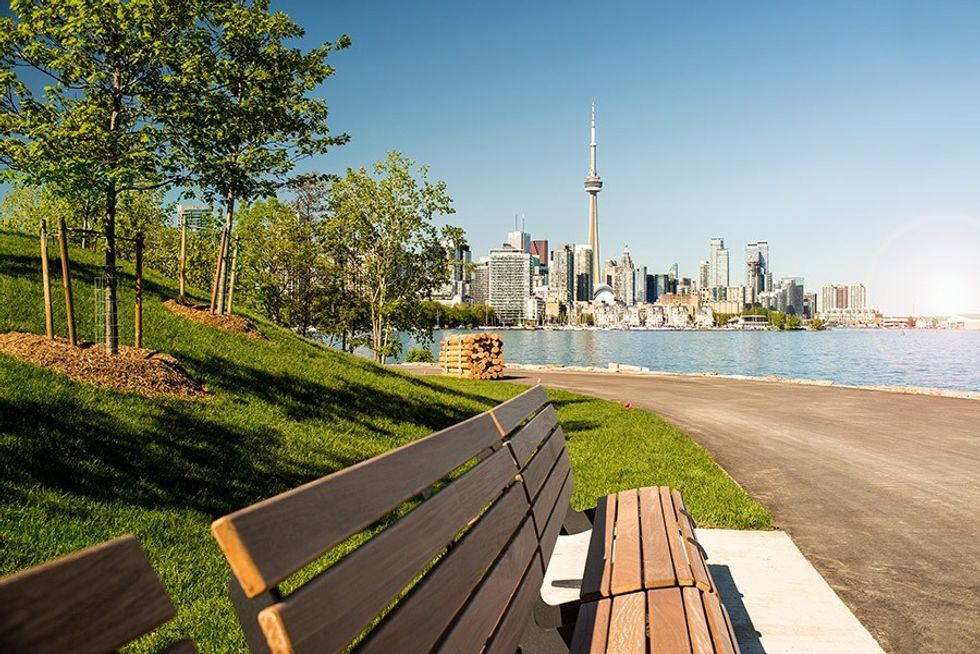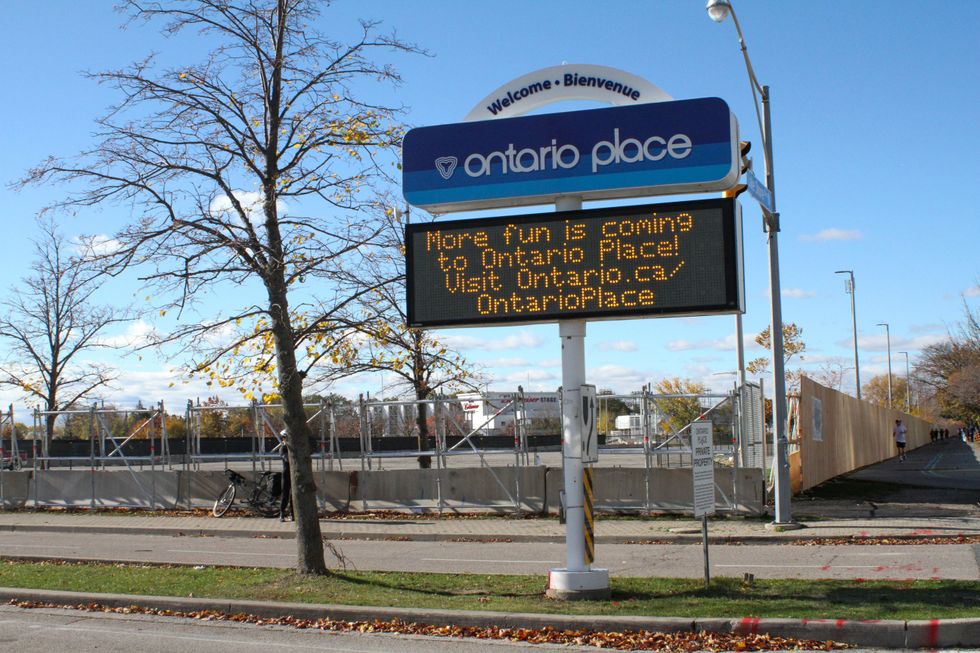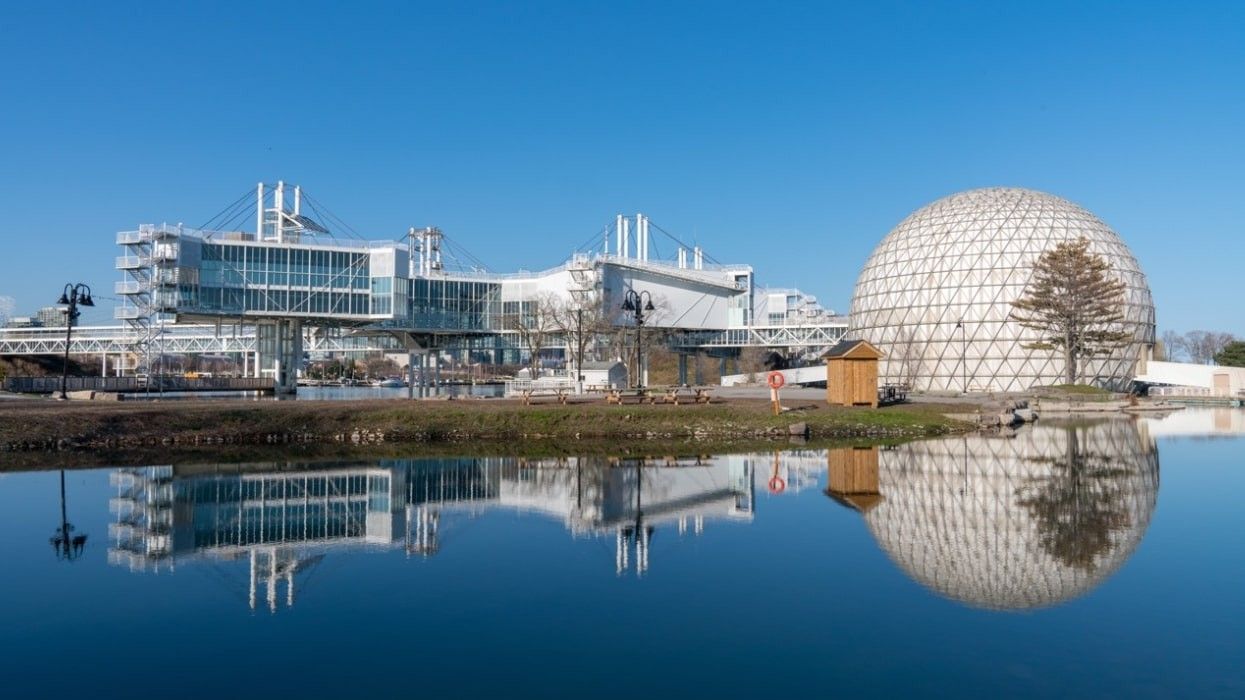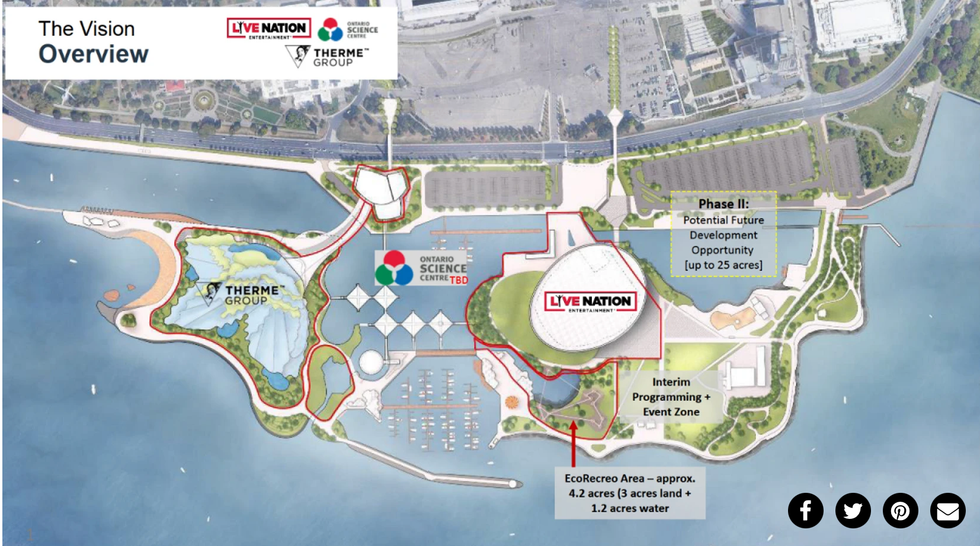There are a few things we know for certain about Ontario premier Doug Ford’s government: They have a soft spot for Minister’s Zoning Orders (MZOs) and they’re determined to watch their highly controversial vision for Ontario Place materialize. Now, it appears they’ve combined these two passions in a bold, but unsurprising, move.
Before we get into it, for those in need of a refresher, MZOs are a tool used to override policy protections for farmland and natural heritage features and areas across Ontario. Essentially, they fast-track development – environmental and/or heritage concerns or not. Up until the end of 2023, only Ontario’s housing minister could turn to the tool. But, thanks to legislation introduced earlier this year, that privilege was extended to the Minister of Infrastructure, Kinga Surma.
Ontario Place is owned by the provincial government and overseen by Surma.
On Friday afternoon – conveniently, right before the first long weekend of the Ontario cottage season – the Ford government announced that they had issued an enhanced MZO (eMZO) to ramp up their Ontario Place development plans. This move eliminates input from the City of Toronto and the significance of a submitted development application. It also exempts the province from the Environmental Bill of Rights.
“To ensure the Ontario Place rebuild continues without delays, our government made an enhanced Minister’s Zoning Order (eMZO) to provide development permissions for new and existing land uses at Ontario Place,” said Surma in a statement. “The eMZO is a land use planning tool that will allow the province to maintain site plan control for portions of the site and make much-needed improvements to the publicly accessible open space on the East Island as part of the rebuild of Ontario Place. The eMZO will also allow for expanded public spaces and parks on the West Island.”

According to the eMZO, posted on the Environmental Registry of Ontario website late Friday, the legislation aims to accomplish three objectives: Establish land use permissions for the entire site; Establish detailed development permissions (i.e. height, Gross Floor Area, and setback requirements); Exempt some parts of the site from municipal site plan control; and Direct that the City of Toronto’s Official Plan cannot prevent the issuance of any licence, permits, or approvals for Ontario Place.
While countless Toronto residents likely remained blissfully unaware of the move all weekend long – too busy enjoying the summer-like weather – it’s safe to say that it’ll hit like a punch to the gut for many. The iconic (and ever nostalgic) waterfront entertainment venue and park, which was decommissioned in 2012, is in need of a major facelift. That, everyone can agree on. But the fate of the once fun-filled, now crumbling, spot is the subject of an ongoing controversy.
Ontario’s plans for a revamped Ontario Place include a shiny new spa and indoor waterpark from Therme Canada on Crown Land, a new Ontario Science Centre (a relocation that critics say leaves children in its existing, historically underserved, neighbourhood without valuable resources), a year-round Live Nation concert venue, and some 20 hectares of beaches and green space. In Friday’s press release, Surma announced that Infrastructure Ontario had released a Request for Qualifications to begin in the procurement process to select a team that will design, build, finance, and maintain the home for the Ontario Science Centre.
Advocacy group Ontario Place for All is doing all they can to protect Ontario Place from hasty and inappropriate construction. In November, the group filed an injunction that would halt construction on the West Island, including the building of the sprawling private spa and waterpark.
Concerns range from the economic inaccessibility of the new spa (a day pass is said to start at $40 for basic entry) to initial public space questions (plans have since changed to include 50 acres of free park and public space), private development on Province-owned land, and the loss of trees and ecosystems, thanks to the redevelopment. The injunction application highlights the loss of 840 trees that will be cut down, the levelling of “historic heritage landscape,” and the filling in of portions of Lake Ontario. Ontario Place for All Claims that these activities aren’t being submitted for an environmental assessment "based on the false assertion that it is a private undertaking — not a public undertaking."
As part of its 95-year land lease agreement with Therme, as with any other private business on Ontario Place land, the Province is required to provide dedicated parking -- something that was revealed in a report late last year from the auditor general. Indeed, some 1,200 on-site parking spots have already been promised to Live Station (Budweiser Stage) for over a decade.
When asked what should concern everyday Toronto residents the most about the plan, Ontario Place for All chair Norm Di Pasquale laid it out. “The $650 million in taxpayer subsidies for a private spa [a figure based on its internally-conducted audit]; a 95-year lease of public space to a mega spa; the obliteration of all 850 trees and vegetation on West Island, disrupting the habitat of 100+ bird and animal species; the planned demolishing and diminishing of the Ontario Science centre to justify the taxpayer-funded 2100 car underwater parking lot, as confirmed by the Auditor General report.,” Di Pasquale tells STOREYS.
So, it’s safe to say Ontario Place for All wasn’t thrilled with the eMZO news, wasting no time in issuing a press release, which it shared on its social media accounts. “The province is using an MZO to steal Ontario Place land and short circuit the development application process that was underway at city hall," said Di Pasquale in a news release on Friday. "Shame on this government that refuses to consult properly or follow any laws or processes as they move to obliterate West Island."
That’s not to say the move came as a surprise. “We knew the province intended to MZO the city-owned land on West Island and hand the land over to the mega spa for 95 years,” Di Pasquale tells STOREYS. “The city refused to surrender or swap the land, opening up this terrible precedent of the Ministry of Infrastructure using an MZO. We are very worried about the precedent this MZO sets for our other public institutions.”

As for the City of Toronto, just days after the injunction was filed, it reached a “historic” deal with the Province that would advance approvals for Ontario Place. Part of the legislation affords the Province the ability to acquire land and water around Ontario Place that "may be needed for future use as part of the rebuilding process."
In the meantime, the fate of Ontario Place for All’s counteraction will be revealed next week. “We are in court asking the Ontario Government to follow its own laws and conduct an environmental assessment of their planned obliteration of West Island, and awaiting a verdict from the judges, who heard our case last week,” says Di Pasquale.
As for Ford, we chatted with the Premier about Ontario Place on a red carpet back in December for Canada’s Walk of Fame Celebration. When asked his thoughts on critics who say he’s reducing public access to the grounds, Ford called them “a very small group of people.” He also doubled down on his government’s claims that they were building a better Ontario Place for all.
“We’re going to make something spectacular; it’s going to be world-class, and it is going to be public,” said Ford. “As a matter of fact, right now, no one is going to Ontario Place. There’s going to be three-million visitors [a year] – one of the largest tourist attractions in the country once we’re done.”
When asked whether the move would make Ontario Place less accessible, Ford says it will be "more" accessible. “Right now, nobody walks through there or does anything there,” he told STOREYS. “We’re going to do something spectacular. Live Nation are going to expect two million people [a year] alone. Then we will have 55 acres of public realm they don’t have right now.”
But, when a huge chunk of the real estate will be pay-to-play, perhaps the real question is, how is accessibility even defined in this city, anyway? Furthermore, of course the future Ontario Place will be, technically, "more accessible," as Ford claims... what was once the former Ontario Place remains closed-off to the public.






















